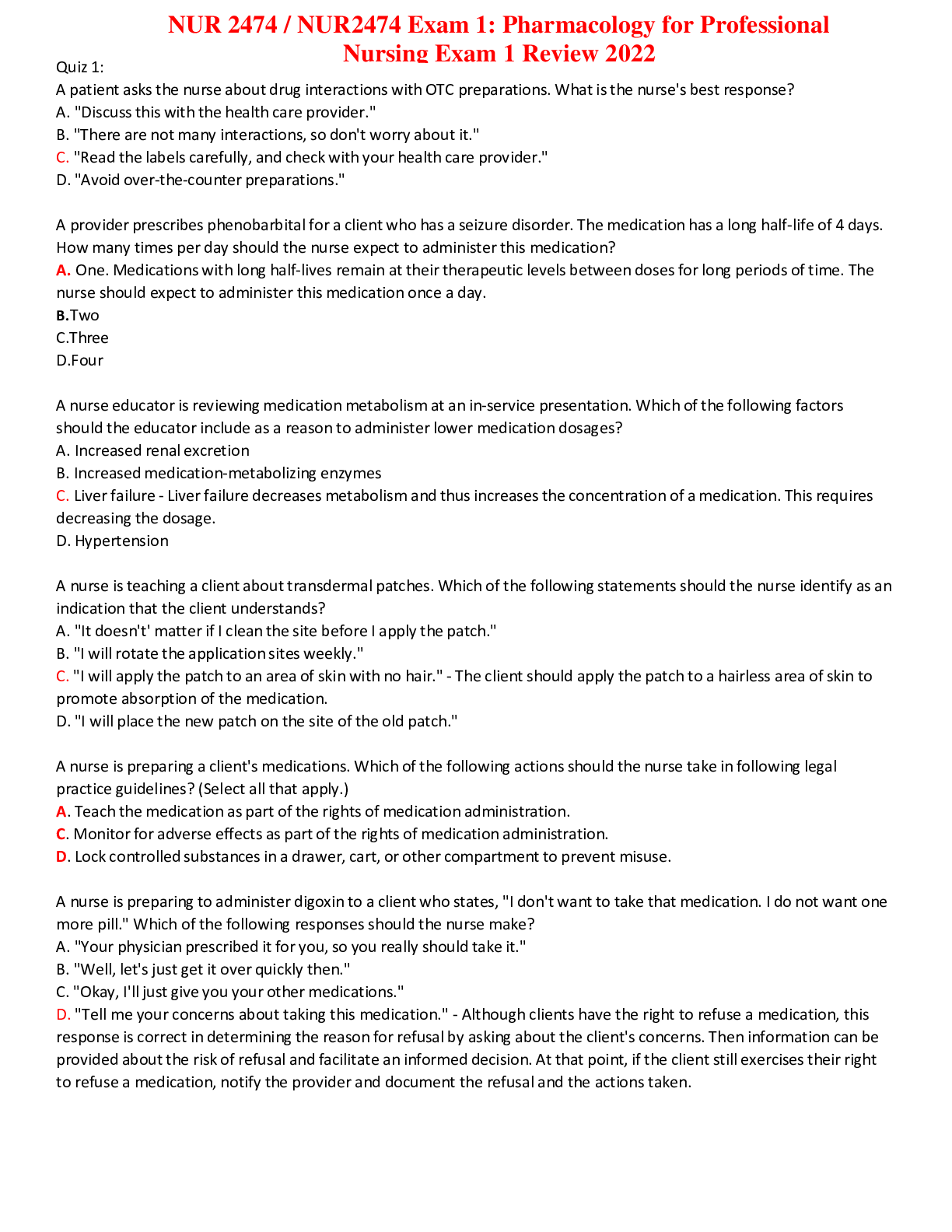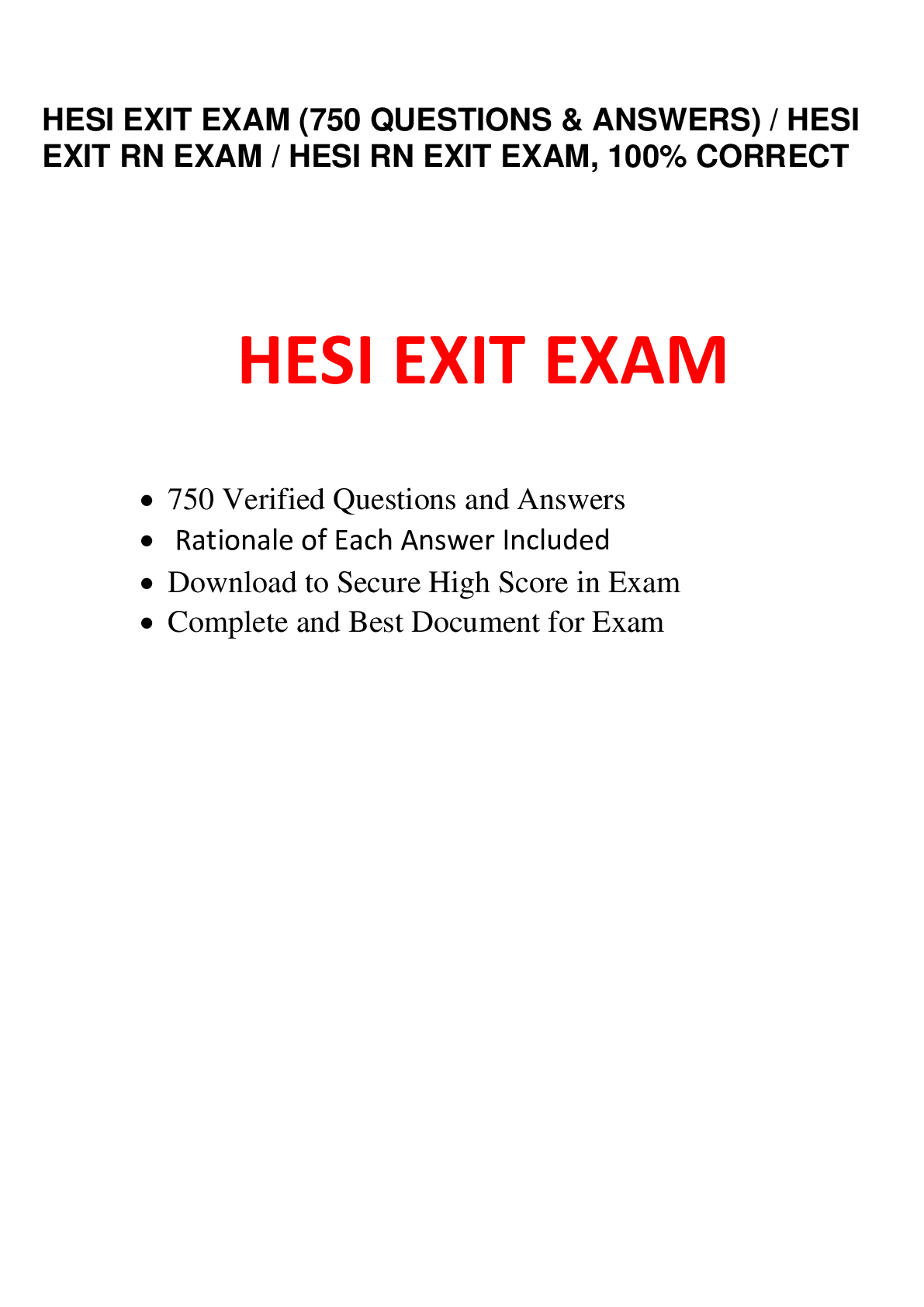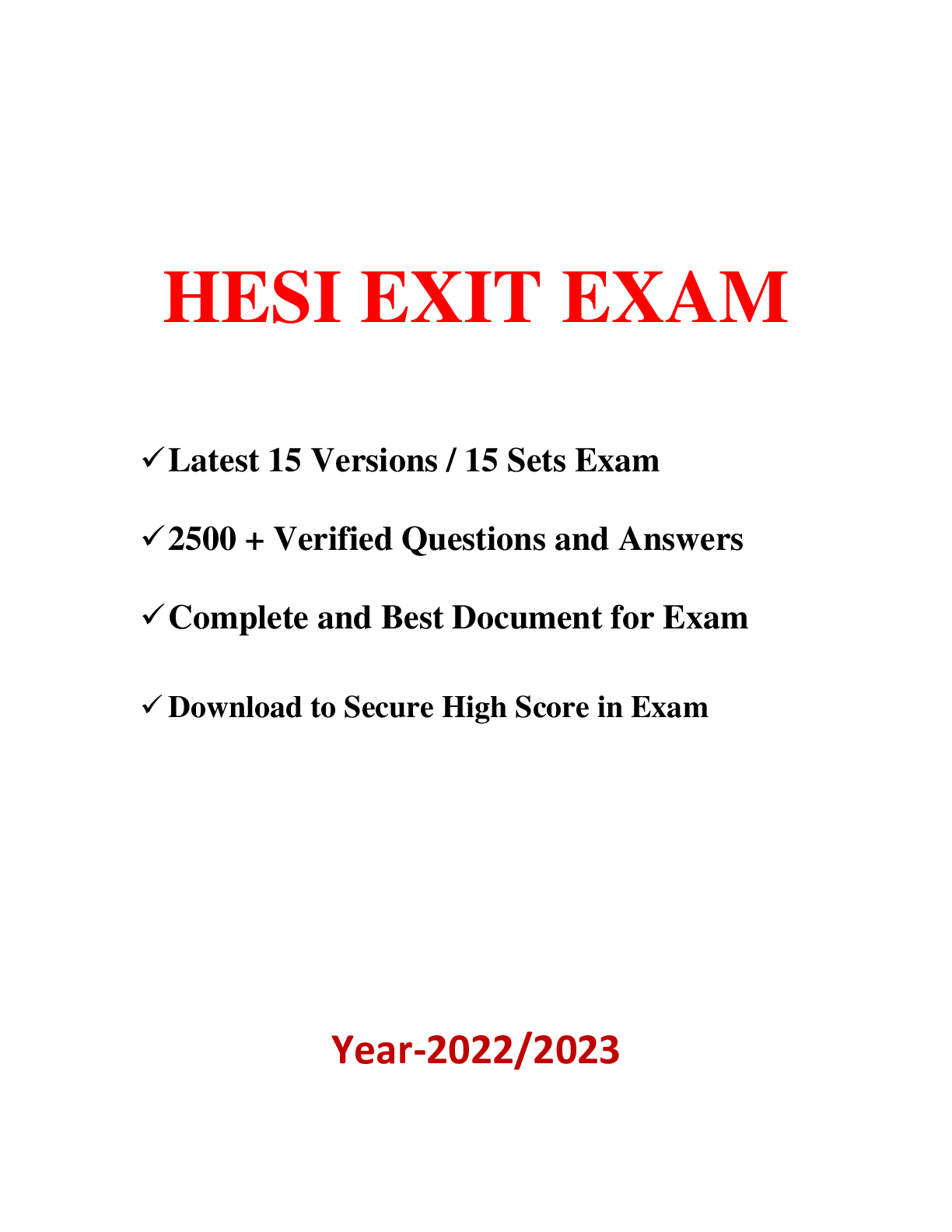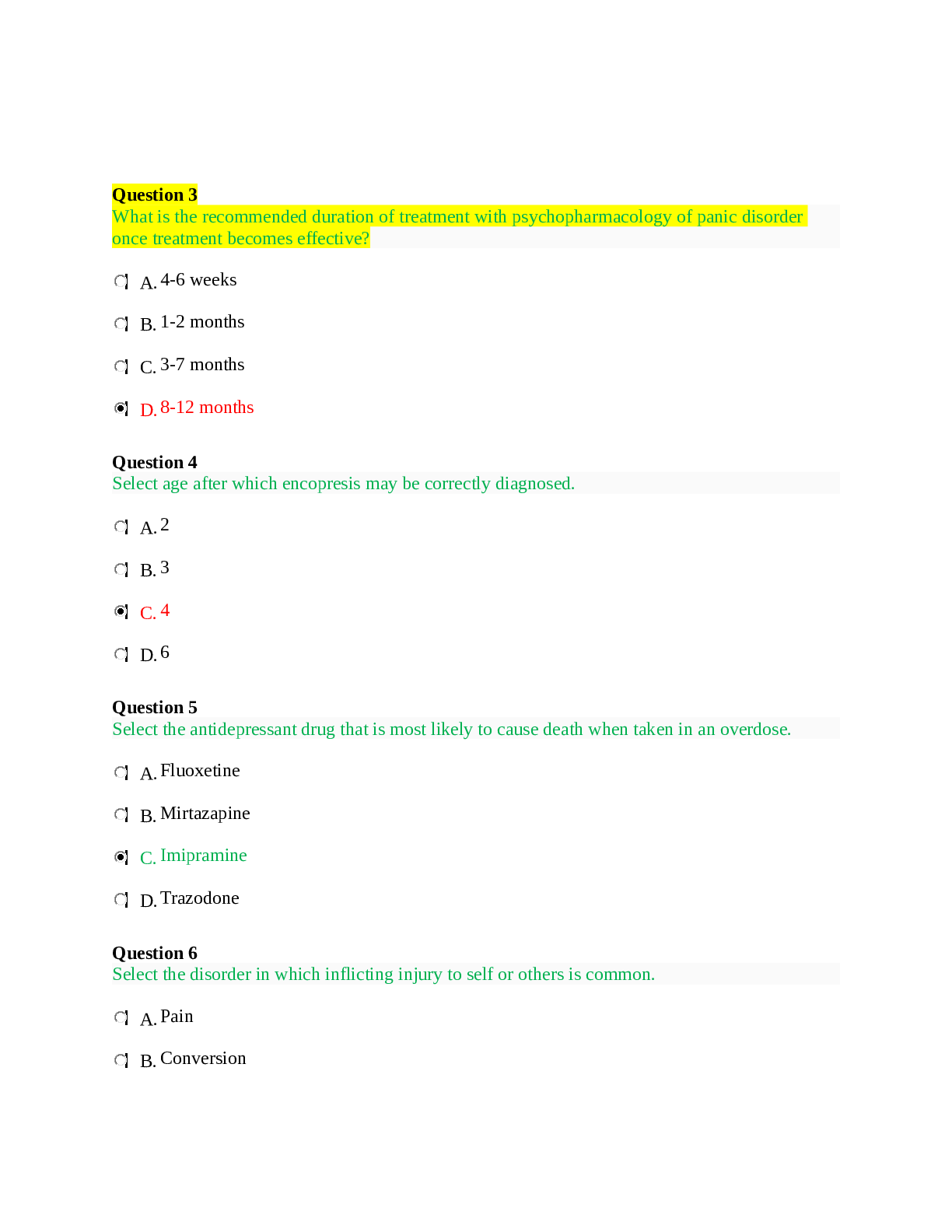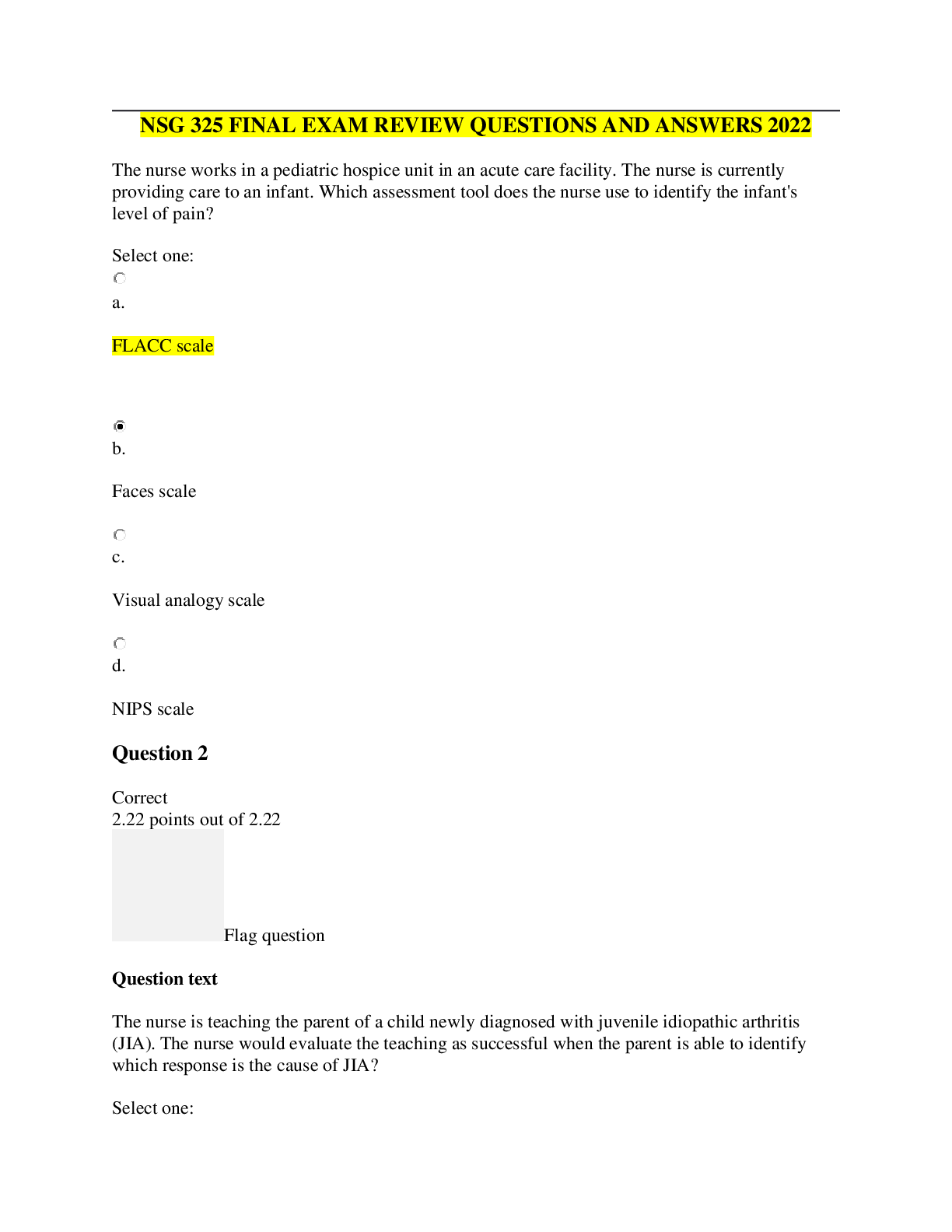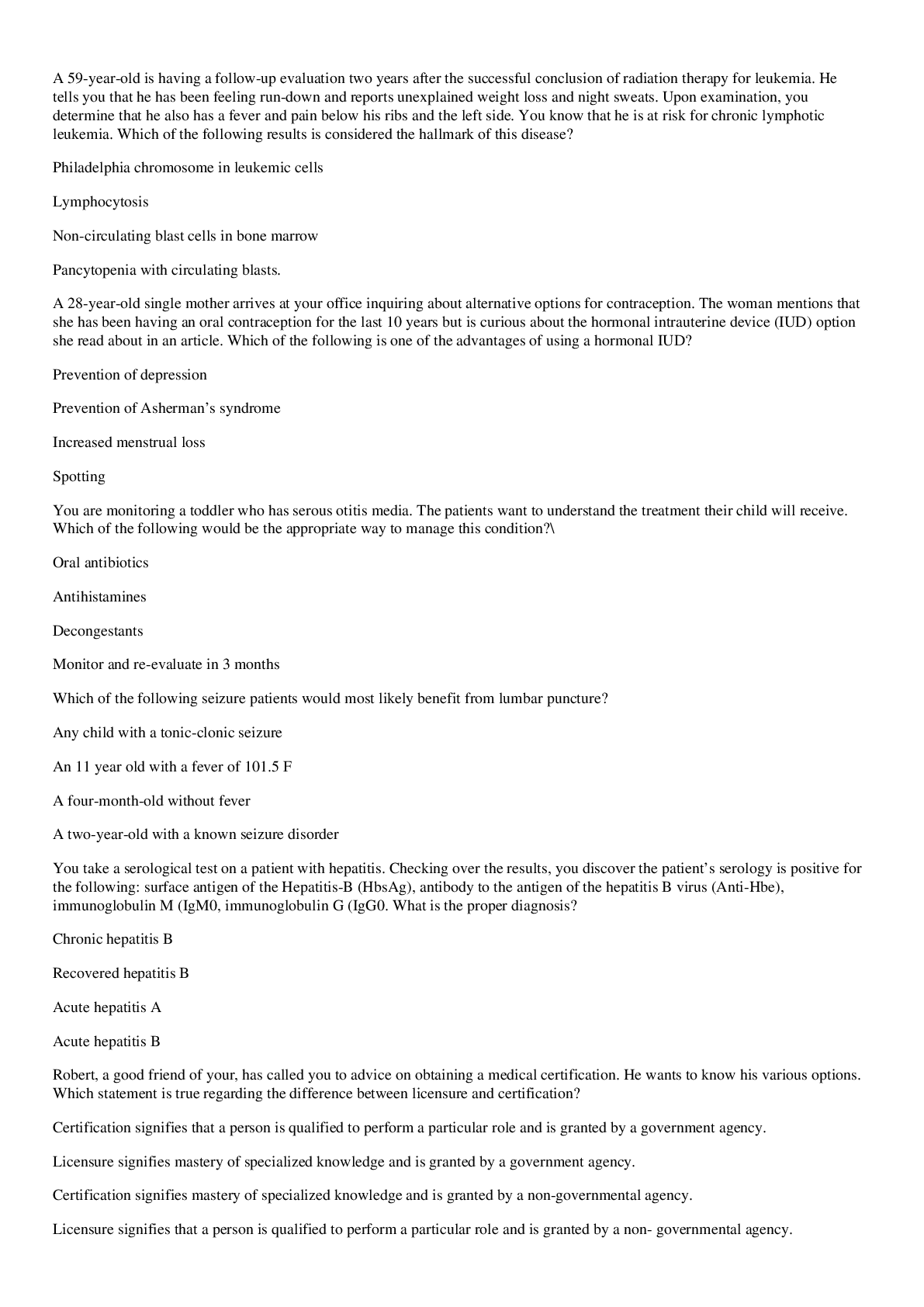*NURSING > EXAM REVIEW > A&P 1 101 Answers of All Modules - Portage Learning (All)
A&P 1 101 Answers of All Modules - Portage Learning
Document Content and Description Below
1. Describe the position of the epigastric region relative to the umbilical region in anatomical position terms. Use a full sen- tence for your description · The epigastric region is superior to t... he umbilical region. (OR) The umbilical region is inferior to the epigastric region. 2. Which anatomical action is occurring at the elbow joint, in the direction of the arrow? · (Elbow) Flexion 3. Look at the figure below. The right femur is moved in the direction of the arrow. What anatomical action term best describes this movement? · Abduction (The femur is moving away from midline) Matching: A. Emphysema B. Pleurisy C. Pulmonary edema D. Cystic Fibrosis A. Emphysema- Smoking is often the cause of this disease. B. Pleurisy This is inflammation of the pleurae. D. Cystic Fibrosis- With this disease, mucus clogs the respiratory tract. C. Pulmonary edema- This condition results in fluid-filled alveoli. Answer the following two questions: 1. Explain why a patient with liver disease would have intolerance to fatty foods. · The liver produces bile which breaks down fats. If it is not producing bile (or less bile), fats will not be broken down effectively. 2. Explain in detail how the stomach contents enter the small intestine. · The pyloric sphincter (valve), located at the base of the stomach, relaxes causing a small quantity of chyme to pass through the opening into the first part of the small intestine. This initiates a reflex that causes the muscles of the sphincter to contract and close the opening temporarily. Then the sphincter relaxes again and allows more chyme to enter. Label the diagram below, including left or right. Discuss the purpose of tooth (B). A: Mandible B:Right Molar C:Right Premolar (bicuspid) F:Right Central Incisor Purpose of tooth type B: Flat molars for crushing food 1. Label the following bone landmarks: B:Supraspinatus fossa D:Acromion E:Neck H:Lateral border I:Inferior angle 1. Yellow bone marrow: A. is found primarily in long bones. B. is found primarily in short and flat bones. C. is found primarily in newborns, not adults. D. produces red blood cells. 2. The diaphysis of a bone: A. is found at the ends of long bones. B. contains the articular cartilage at joint articulations. C. contains the proximal epiphysis. D. is the center length of a bone. E. both A. and C. 3. Compact bone: A. forms the exterior of bones. B. forms the interior of bones. C. is lighter than spo ..................................................CONTINUED [Show More]
Last updated: 2 years ago
Preview 1 out of 40 pages

Buy this document to get the full access instantly
Instant Download Access after purchase
Buy NowInstant download
We Accept:

Reviews( 0 )
$25.00
Can't find what you want? Try our AI powered Search
Document information
Connected school, study & course
About the document
Uploaded On
Nov 07, 2021
Number of pages
40
Written in
Additional information
This document has been written for:
Uploaded
Nov 07, 2021
Downloads
0
Views
118


